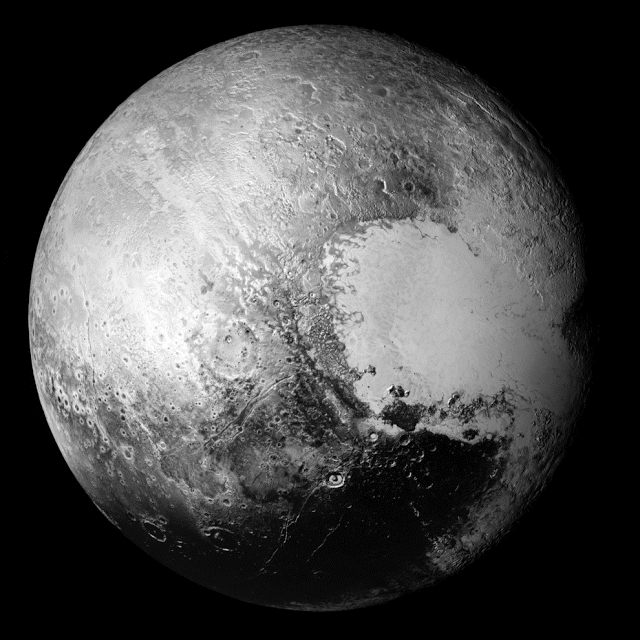Alan Stern, principal investigator in the mission said, “Pluto’s geology is incredibly diverse. I think it’s magical. It’s absolutely breathtaking.” However, still the scientists aren’t sure how Pluto got its present state of extreme diversity. But, they expect to get some clues from the data that will be available by the next year. The data is also expected to shower some light over Pluto’s family members – its 4 small satellites (Nix, Kerberos, Styx and Hydra) and one large moon “Charon”.
Some images of Charon were also released yesterday. Researchers say that even though Charon appears to be more dull than Pluto, it does not have a diverse geology or composition and there is no puffy atmosphere like Pluto. Many scientists thought it is a lifeless cratered sphere, but as it appears to be, it is not! Stern says, “Charon has its own history. There are faults, or other kinds of tectonic features on the surface — big canyons, clear evidence that there was some evolution on the surface, not just things bombarding it from the outside.”
Another surprising feature that came into light is a dark stain at the north pole of Charon. According to scientists it might be made up of ‘irradiated organic molecules’ that came from Pluto. The moon’s south pole is a complete mystery.
The best idea taking shape here is that an impact that formed Earth – moon system caused the formation of Pluto – Charon system too. The 4 smaller moons might be the shards of debris formed as a result of collision. But, these moons pose another question – why one moon is dark and others bright if they are result of same matter? Adding to the confusion are Nix’s pics which show that it is brighter than both Pluto and Charon. This 30 – mile long moon has one huge crater with some red material surrounding it. Stern said, “Whether that’s an impact crater or something else is a little bit TBD. It’s interesting that we don’t see a lot of other craters on its surface. We have some ideas about that, but it’s still early.”
Image Courtesy: National Geographic






















